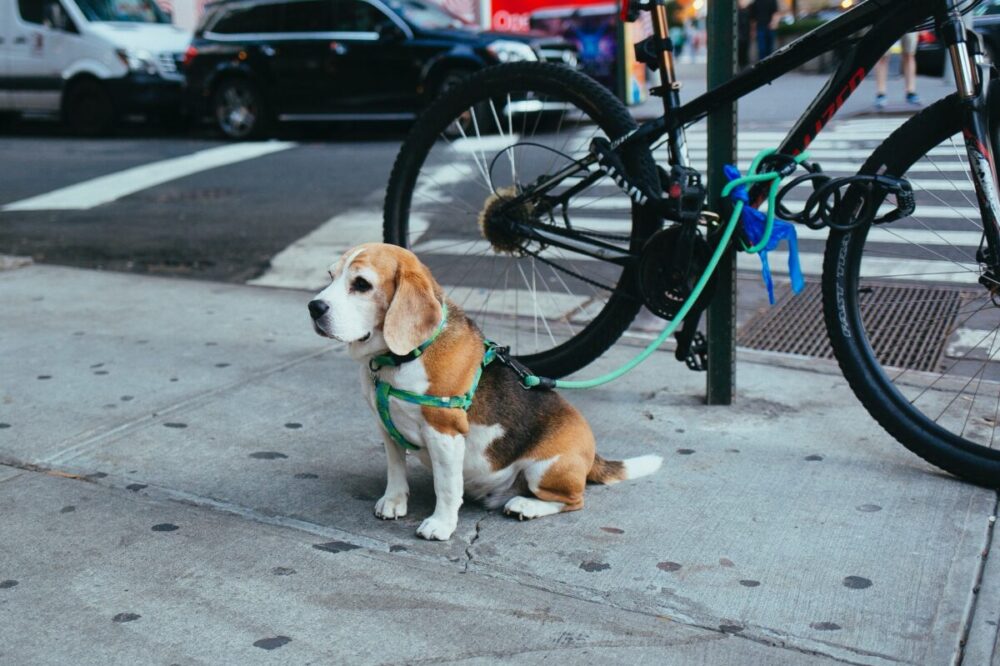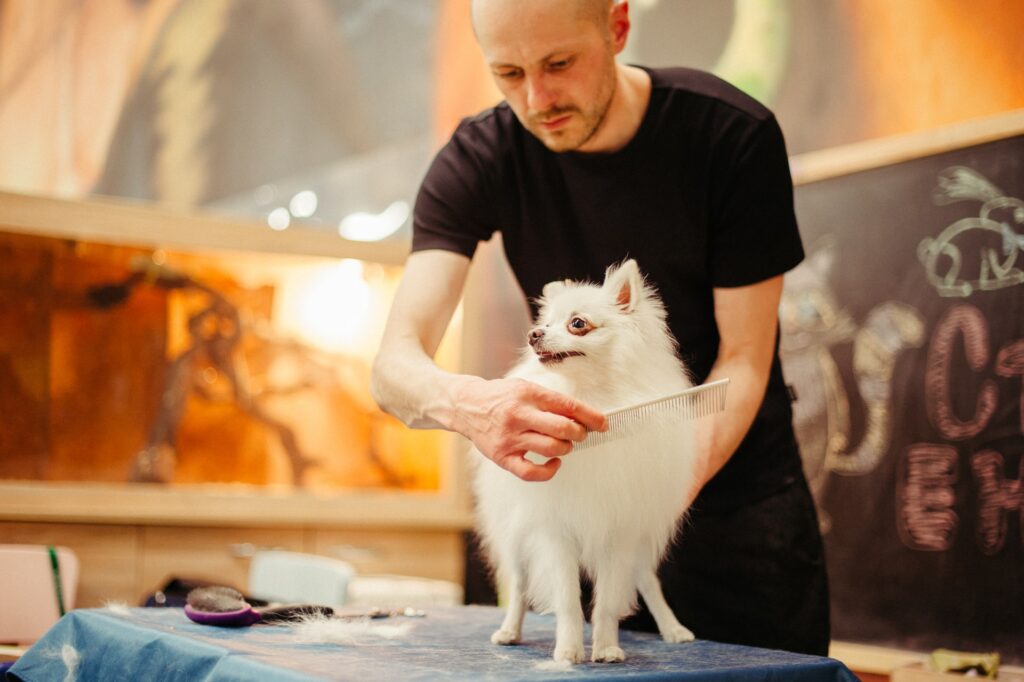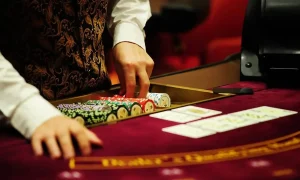Congratulations on your new puppy! A puppy will bring you lots of love and affection – and challenges in the beginning, when it’s so important to train him.
Puppies start their learning from the moment they are born – first with their mom and then with you. They soak up new information eagerly and seem to have endless amounts of energy!
Here’s what you should train your puppy to do first, followed by other useful things for him to learn.
Teach him his name
Your puppy’s name is very important, as it is like a command to get him to pay attention to you. No matter what other commands you give your puppy, such as ‘come,’ ‘sit,’ or anything else, your puppy’s name often comes first. When you teach your puppy his name, it’s as if you’re saying to him, ‘look at me and pay attention.’
To teach your pup his name, call his name and give him a treat or a lot of praise as soon as he looks at you. Repeat this process a few times, then take a break for a while. Do it again a few times.
Your puppy should learn his name within a week at most and often within a few days.
Note: It’s crucial to ONLY use your puppy’s name for commands and positive reinforcement. If you have to tell your puppy ‘no’ to correct bad behavior, don’t use his name. This isn’t as easy as it sounds! However, you want your pup to know that he will always be rewarded with positive attention when he responds to his name. Otherwise, you might encounter challenges later on when you train him for other things (such as coming back to you when called.)
Toilet train your pup
One thing to remember when toilet training your puppy is that he doesn’t have full control of his bladder at 6 weeks old. Expect accidents, and arm yourself with patience.
The essential aspects of toilet training are:
- Take your pup outside every hour to give him plenty of opportunities to succeed
- Reward your pup with both praise AND treats each time he goes to the toilet outside
- Use a crate (with comfy blankets inside) to limit your pup’s freedom inside
- Learn your puppy’s body language to recognize when he needs to go to the toilet
Train him not to nip or bite
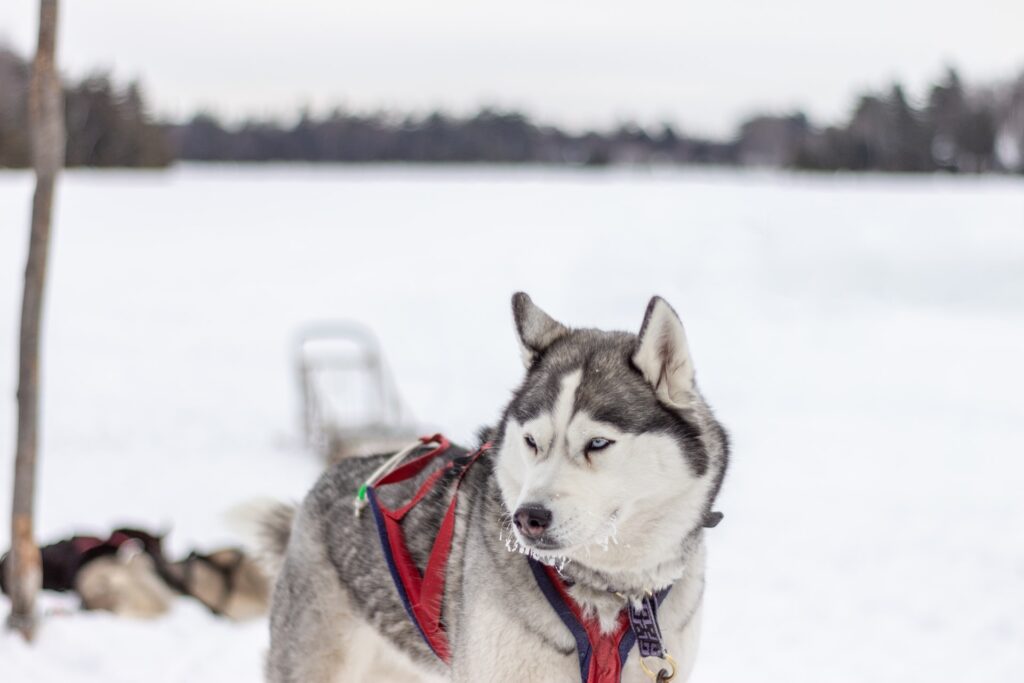
Image source: unsplash.com
A puppy’s teeth are very sharp, and it hurts when your pup gets excited and nips or bites. You want to address this behavior right away and do it consistently so that your pup learns it’s not OK to nip you. You could make a yelping sound, much like another dog would do so that your pup understands, “Ow! That hurts!”
Here, the golden rule is not to give your puppy any attention when he bites – positive or negative. Nipping is a bid for attention, so when your pup sees that this doesn’t work (you can freeze, for example, if you’ve been playing together), he’ll soon stop.
Train him to avoid guarding
Puppies, by nature, want to protect the people they love, along with their food and toys.
If you take something away from your puppy while he’s playing with it, he will respond by guarding it, which can lead to problem behaviors in the future.
Resource guarding, as it’s called, is a useful instinct for dogs living in the wild. However, you don’t want your domestic dog growling, lunging, or nipping if you try to take something away from him.
Try redirecting your puppy to a different object before taking the first one away or trading the first object for one that is more valuable in your puppy’s eyes. If it turns out to be especially difficult for you to handle your dog and get him attending to your commands, you can always outsource this important aspect of its training. To learn more, head over to this page.
Spend time bonding with your puppy
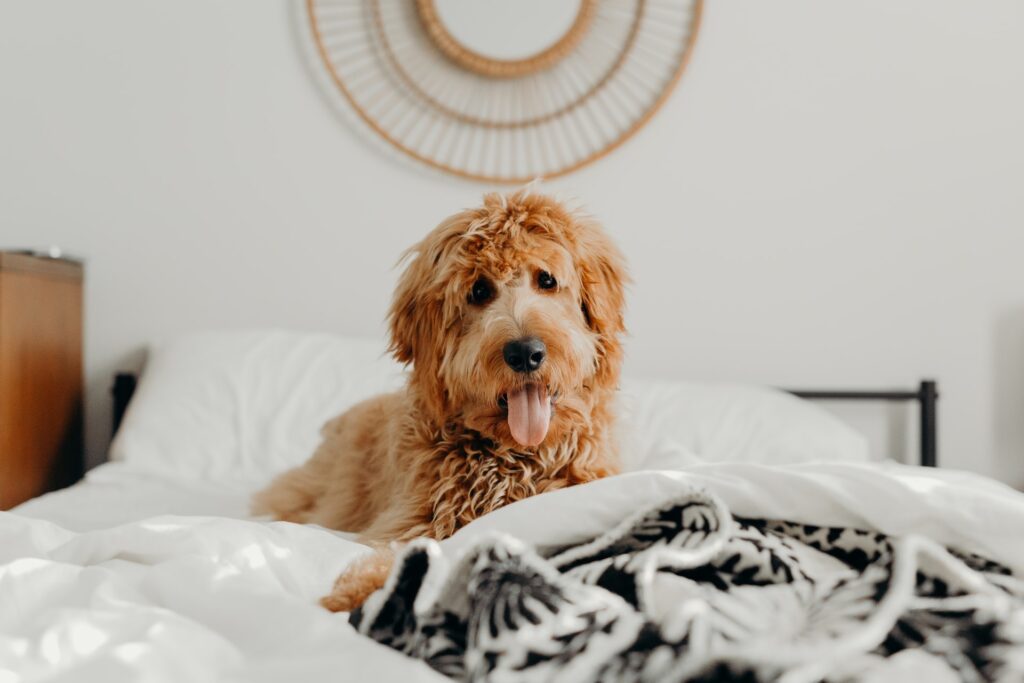
Image source: unsplash.com
Take the time to pet, walk, play with, and train your puppy. Spend some quality time watching TV together – you can try a bed ramp to make it easy for your pup to make his way up onto your bed or sofa. Check it out here.
Be kind to your pup so that he knows he can trust you. Even if you get frustrated or angry, don’t scream or hit your dog, as he then won’t trust you.
Be consistent in your behavior towards your puppy so he’ll know what to expect from you. Introduce your puppy to new people and situations slowly. Give him time to adjust to his new surroundings, and never put him in a situation where he might be frightened. Your pup will need to socialize with other dogs, but you can do this in a puppy class. Don’t bring your puppy to a dog park with lots of older dogs and potentially stressful situations that could traumatize your friend. You can’t be sure what another dog will do when faced with an excited puppy.
You can keep your puppy stimulated by introducing new smells, sounds, and sights gradually.
Teach the basic commands
‘Sit,’ ‘stay,’ ‘down,’ and ‘come’ are the basic commands your puppy will need to learn. If you’ve never had a puppy before, it’s a good idea to sign up for a puppy training class.
Here’s how to teach your dog to sit:
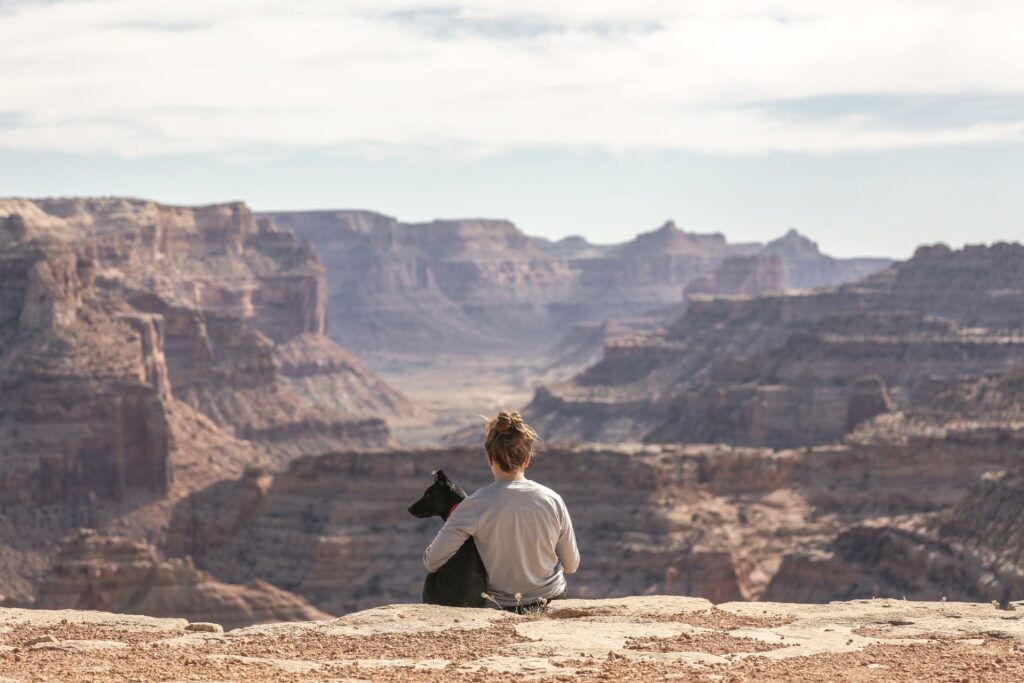
Image source: unsplash.com
- Hold a small treat in your hand in front of your puppy’s nose, with your palm facing up.
- Raise your hand slowly above your puppy’s head. Your puppy will naturally have to sit down to follow the treat with his nose.
- As soon as your puppy’s butt touches the floor, say “Yes!” and give him the treat.
- Repeat this four more times with a treat, then once without the treat in your hand but still rewarding your pup afterward.
- Puppy training classes are excellent for your puppy because he can socialize safely, and you can get support to teach your puppy the basic yet essential commands effectively.
Teach your puppy to use a crate
Teaching your puppy to use a crate is an excellent way to get him onto a schedule and help him settle into his new home. A plan will help with toilet training and get your puppy to go to sleep at night (your pup will learn to anticipate bathroom breaks and bedtime).
You want to train your puppy to love his crate, which is easy enough to do.
Give your pup a treat each time he goes into his crate. You can also feed him in his crate if you wish. Your pup will associate his crate with good times, and it will be easier for you to leave him in his crate when you have to go out, so long as it isn’t for long periods.

